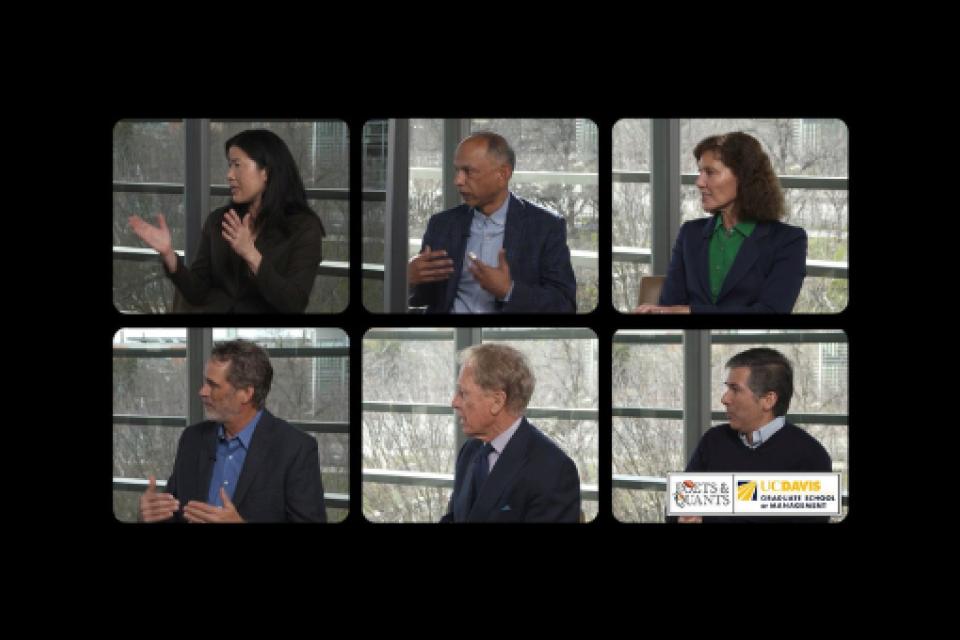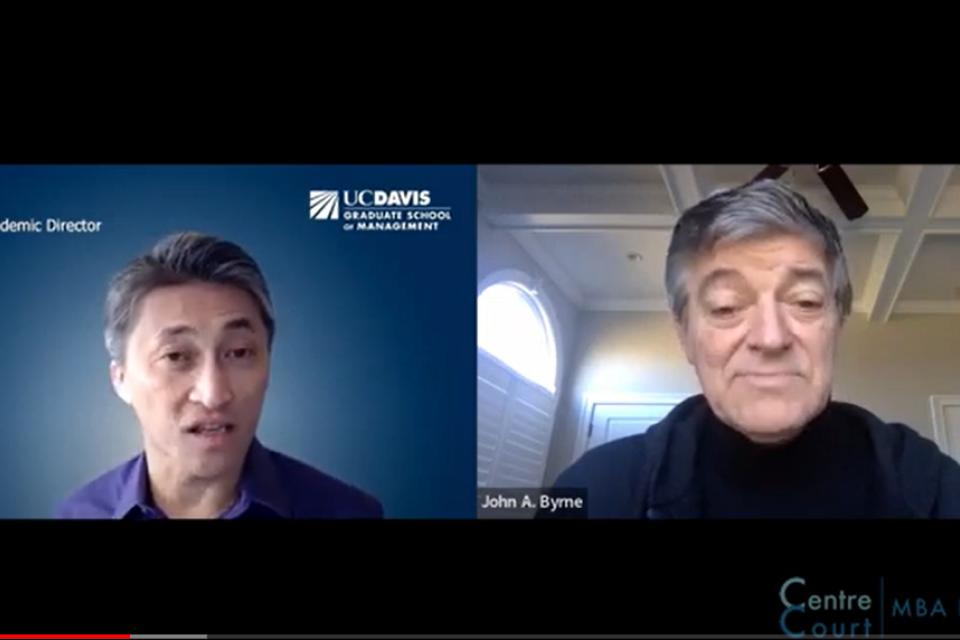"We Are GSM" - Meet Associate Professor and Associate Dean Joe Chen

Even in these roller coaster financial times, Associate Professor Joseph Chen believes it is possible to make sense of Wall Street.
Chen’s research reveals that stock market returns behave asymmetrically: they are more likely to make extreme moves on the downside than on the upside, and when markets go down, different stocks are more likely to move down together than when markets move up.
Chen dives deep into the data that drives financial markets—uncovering patterns in investor behavior, downside risk and market correlations. He also uses those skills to coordinate a complex matrix of course planning for multiple degrees as associate dean of programs and curriculum.
As an empirical asset pricer, he explores how real-world events like tariffs and recessions impact everything from stocks and bonds to currency markets.
In this video spotlight, he shares insights on investment strategies, the surprising risks of diversification, the organizational lessons of mutual funds—and even his past life as a big wall solo climber, including scaling El Capitan in Yosemite.
Video Transcript
I am an empirical assets pricer, which generally means that I look at the data coming from the stock markets and try to find out, analyze patterns of behaviors that the stock market returns tell us.
A lot of my research focuses on asymmetries in stock markets, so things like stock market crashes, downside risk. But if you look at the behavior, investors care more about probability of losses more so than they care about gains. If you worry about the risk in the stock market, you should be focusing more on losses rather than gains.
Another area that I looked at in terms of asymmetries are during stock market crashes and how correlations disappear during bear markets. What that means is, precisely when you need diversification benefits, correlations tend to disappear, which means that when things go bad, everything tend to go bad together, meaning diversification benefits tend to disappear precisely when you need it.
The interesting thing about research is that people tend to look at different markets separately. So, they tend to look at the stock market separately from the bond market, separate from the currency market.
What Tariffs Tell Us About Bonds
One of my research is actually looking at the intersection between the currency markets and the bond market together. With recent news about tariffs and potential recession, it's going to affect both currency markets, and the bond markets together. This relationship is actually rather predictable if you look across different countries. So, if you see that one country has a steeper yield curve than another, that tells you which bond markets you should be investing into.
Another line of my research looks at mutual funds. So instead of thinking of mutual funds as investments, let's think of them as companies. If you were to run a company or an organization? What's better? Should you have a bigger organization or a smaller organization? Because you can actually think of mutual funds as little laboratories of how you should organize your companies.
My primary class is Investment Analysis and Portfolio Management. This is a class where you think about where you put your retirement money, or specifically, where you might put other people's retirement money. When the price-to-earnings ratio tends to be high, you should avoid the stock market.
- Should you move out of the stock market?
- If so, where would you go to? Would you go to the bond market?
- Would you go to the international markets?
I tell them, “Hey, these are some parameters that you should be looking at when you're deciding to figure out where to invest into.
From El Capitan to the Classroom
I used to do a lot of rock climbing. Being in Northern California, the premier place to go rock climbing is like El Capitan in Yosemite. I used to do this obscure activity called big wall solo climbing. It is not like the Alex Honnold’s free solo climbing, but big wall solo climbing is. How do you get yourself and 150 pounds worth of equipment and food vertically up for a seven-day period on the El Capitan? Nowadays, I'm too old, so I'm basically the old guy at the climbing gym, just sort of showing the young kids what to do.


